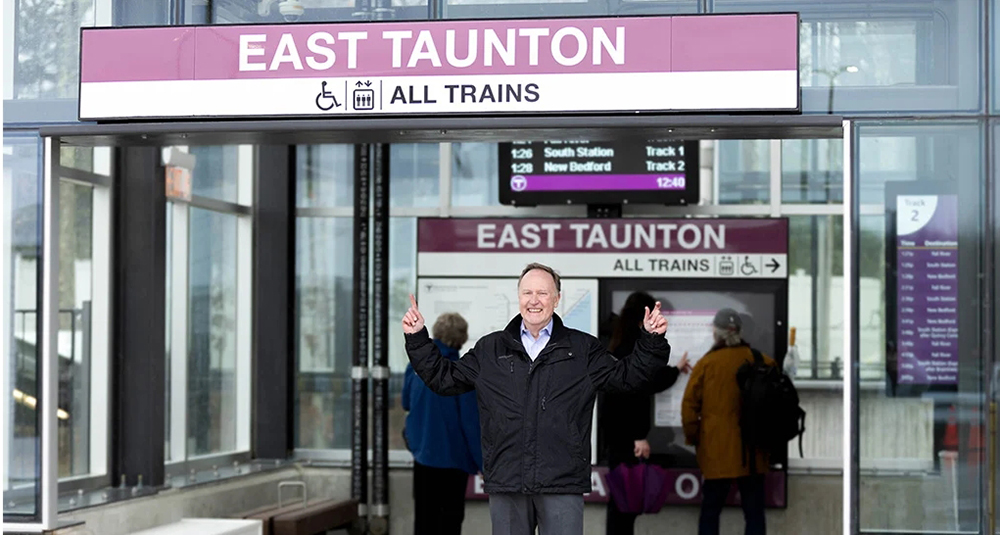News:
Spotlight Content
Posted: May 29, 2014
Hotel lenders are lending but how deep is their knowledge of the credit?
Two in Chelsea, two in Somerville, six in the Waterfront District including a 1,200 - 1,500 room headquarters hotel. Three in Burlington, two in Cambridge, two in Revere plus a casino. How many rooms in Everett? Two in Gloucester, one in Littleton, two in Worcester, two in Portsmouth, two in Nashua, two in Burlington, four in Portland, three in Bangor. There are thousands of hotel rooms under construction, in the pipeline or in the permitting phase in the New England region. How many will be built and how many will open before we experience the peak of performance in the hotel market? The train has left the station and developers are working overtime to get properties off the drawing board and into the ground.
Having been through five cycles as a broker, owned real estate bank officer and consultant for many lenders, I wish that lenders would expand their underwriting and institute policies that might make it tougher on borrowers, but would preserve the value of the asset when the eventual downturn comes. The first page of the lender's credit committee approval package should start by answering this question; If we owned this hotel, what will we have to know?
First, a lender must understand that at the center of the hotel industry there are core brands and franchises that have core designs and brand standards. Like the term "location, location, location", the further away from the core you drift, the more risk is assumed. There is a standard box Hampton Inn. 100 - 120 rooms, 700 s/f of meeting space, eat breakfast in the lobby. Pick it up at Hilton headquarters and plop it down in any suburban area in the country.
We recently sold a 187 room Hampton Inn with 6,000 s/f of meeting space and a restaurant. When the borrower constructed it, he wanted couples to have weddings in his "event center". But brides never wanted to be married in a Hampton Inn. When the bank forced the sale, buyers of standard box Hampton Inn's, who wanted nothing to do with food and beverage operations, wanted nothing to do with the hotel.
Second, lenders need to understand the market within which the hotel operates. Lenders should be comfortable with the demand generators in the market and the stability of those demand generators. Within the Amherst/Northampton marketplace, in the past forty years, only one hotel has been given back to a lender (1990). Non-cyclical demand from seven colleges and universities provide an economic base of business that just never goes away. The same for Hanover, N.H. and Burlington, Vt. In the 1990s, a single airline offering discount prices expanded operations at the secondary airports of Manchester, N.H. and Warwick, R.I. Hotel construction exploded, adding over 1,000 more hotel rooms in each market. Then the economy softened, the airline expanded operations in Boston and cut flights in Manchester and Warwick. All of the hotels suffered. Many were foreclosed upon and resold at a much lower basis.
Third; does the brand still want to have this hotel in their system? In the 1960s and 1970s Howard Johnson's and Holiday Inn's sprang up everywhere. But that was two generations ago. The people who drove by those hotels with their families are dead. Their kids have grown up and watched the hotel get old, so they don't want to stay there anymore. Holiday Inn purged over 500 hotels around the country from their system, just because they looked old and their design didn't meet "today's" standards. "Generation One" Residence Inn's by Marriott created a whole new niche with "extended stay" hotels in the mid 1980s. Three years ago Marriott decided that the original design of the Gen One Residence Inn didn't fit Marriott. Many of these successful hotels enjoy market share exceeding 150%. But Marriott doesn't want them anymore. No one does. When a Gen One Residence Inn loses its Marriott brand affiliation upon franchise license expiration, business will drop off a cliff and so will the value. When was the last time you saw a new, suburban, full service Sheraton? The answer is +/-1980 when Thomas Flatley converted his "Tara" hotel chain to Sheraton. Twelve of those stretched from Portland, ME to Stamford, Conn. Two exist now.
Understand what "PIP" means! Next to actual cash flow, Product Improvement Plans are the most critical components of value for a hotel. Brands change standards like the New England weather. Owners are obligated to keep up with standards. If the lender takes back the hotel, it is unlikely the lender will complete a PIP, however, the next buyer will be obligated and the cost will come out of the value of the hotel. PIP costs don't typically show up in appraisals.
All lenders should personally inspect construction progress before allowing a draw. Any lender that knows what SMERF stands for goes to the head of the credit committee! Is the hotel dependent on opaque sites? Are the guest satisfaction scores above average? Two pipe or four? PTAC's or VTAC's in the rooms? Case goods? Whose name is on the liquor license? When do you "break business"? Bed bugs, SAR's, how many months out are those accounts receivable? But wait, I thought we had a comfort letter!
James O'Connell is the principal of O'Connell Hospitality Group LLC, Danvers, Mass.
Tags:
Spotlight Content
MORE FROM Spotlight Content
Check out the New England Real Estate Journal's 2025 Fall Preview Spotlight
NEREJ’s Fall Preview is Out Now!
Explore our Fall Preview Spotlight, featuring exclusive Q&As with leading commercial real estate professionals and in-depth byline articles on today’s most relevant market topics. Gain insight into the trends, challenges, and opportunities shaping New England’s commercial real estate landscape this fall.
Explore our Fall Preview Spotlight, featuring exclusive Q&As with leading commercial real estate professionals and in-depth byline articles on today’s most relevant market topics. Gain insight into the trends, challenges, and opportunities shaping New England’s commercial real estate landscape this fall.

Quick Hits
Columns and Thought Leadership

How long should I hold a property for it to qualify as an investment property in connection with a 1031 tax-deferred exchange? - by Brendan Greene and Mark McCue
Internal Revenue Code (IRC) Section 1031 provides “No gain or loss shall be recognized on the exchange of property held for productive use in a trade or business or for investment if such property is exchanged solely for property of like kind which is to be held

30 years on South Coast Rail: A journey to connect Southeastern Mass. with commuter rail - by Rick Carey
On March 24, 2025, a dream more than three decades in the making became a reality with the launch of the Massachusetts Bay Transportation Authority’s (MBTA) South Coast Rail commuter service. This milestone marks the completion of a project that overcame numerous starts and stops, including changes in leadership

How do we manage our businesses in a climate of uncertainty? - by David O'Sullivan
These are uncertain times for the home building industry. We have the threat of tariffs mixed with high interest rates and lenders nervous about the market. Every professional, whether builder, broker, or architect, asks themselves, how do we manage our business in today’s climate? We all strive not just to succeed, but

Shallow-bay wins on 495/128: A renewal-driven market with a thin pipeline - by Nate Nickerson
The Boston industrial market entered mid-2025 in a bifurcated state. Large-block vacancy remains elevated, while shallow-bay along the 495/128 corridor continues to prove resilient. Fieldstone’s focus on this geography positions us squarely in the middle of a renewal-driven, supply-constrained










.png)
